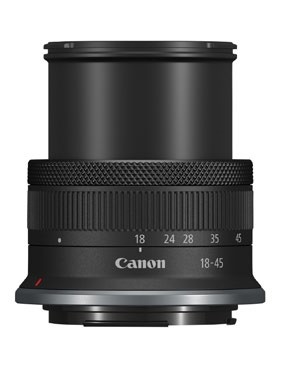Canon EOS cameras have either a ‘fullframe’ sensor (which C
is the same size as a frame of 35mm film negative) or a smaller APS-C-sized sensor. The APS-C format has a crop factor of 1.6x compared with full-frame, which means that a lens will appear to have more reach.
This crop factor has to be applied even when you’re shooting with RF-S/EF-S/EF-M lenses that are designed for APS-C sensors. That’s why APS-C standard zooms are 18-45mm or 18-55mm –they offer aview that’s equivalent to astandard 24-70mm full-frame lens.
While the crop factor of an APS-C sensor can be good news for wildlife and sports photography with long lenses, it’s less useful for landscapes and interior shots. For example, the full-frame RF 10-20mm F4L IS STM lens effectively becomes a 16-32mm F4L IS STM when it’s attached to the APS-C EOS R50 or EOS R7. While that’s still very wide, it doesn’t give you the same impact. On the other hand, the RF 800mm F11 IS STM acts like a 1280mm F11 IS STM lens on APS-C cameras – with the option of adding a 1.4x or 2x Extender to effectively take you up to 2560mm! There aren’t many wild animals or birds that you’ll be unable to photograph with such an extreme focal length.

Canon RF-S 18-45mm F4.5- 6.3 IS STM